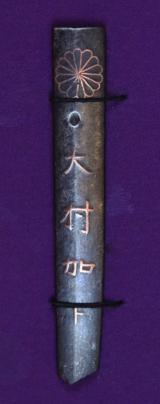An Original Imperial German WW1 Zeppelin Warfare Interest, Bespoke. And Coloured Print of a German Infantryman, Landsturmann Lantz. From the Wolf Photographic Studio of Ulm.
Landwehr Infantry Regt. Nr.123 Ravensburg A personal portrait photo of a German WW1 rifleman that has been onlaid onto the patented print, of three infantrymen, and the subject from his regiment. Imperial German Infantrymen in a wooded scene, with a Zeppelin in the background and his name inscribed below. They were unique patented German photographic records of WW1 that were created for the family members of the soldier for posterity by a photographic studio and print shop. A Wolf of Ulm. 330mm x 450mm. Sold un-mounted and unframed. It would look absolutely stunning nicely reframed. One of two stunning and rare matching examples of original Great War period Imperial German Zeppelin and infantry warfare prints we acquired that we are selling separately. read more
325.00 GBP
A Zeppelin Landing Medal Of 31st July 1909
A scarce and collectable medal from the earliest days of airship travel. In good condition with replacement ribbon. Graf Zeppelin landed for the first time in Frankfurt with his airship "LZ II" on July 31, 1909.
Thousands of spectators cheered so loudly that Graf Zeppelin could not hear the words of greeting from Mayor Adickes. To this day, the Graf Zeppelin memorial near the future Rebstockpark serves as a reminder of his pioneering work. The Rebstock became the home of the flight pioneers. Pilots gathered for the first international flying competition during the "Flyer week" as a part of the "International Airship Exposition" (ILA) in October 1909. The German Airship Transportation company (DELAG) opened the "Airship Harbor Frankfurt" on the Rebstock grounds on March 4, 1912, using the remodeled manor house as headquarters. The festive event was celebrated with the arrival of the dirigible "Viktoria Louise". The "Frankfurt Airport" was opened on the grounds of the Rebstock in August 1926. By 1928, this was the second largest airport in Germany, after Berlin. read more
195.00 GBP
Victorian First Lanarkshire Artillery Volunteers Helmet Plate
Victorian other ranks helmet plate of the 1st Lanarkshire Artillery Volunteers.
A fine scarce white metal example of a home service helmet plate, being of a Victoria crowned royal arms with a scroll below inscribed First over a gun which is resting resting over another scroll inscribed Lanarkshire Artillery Volunteers
There are three fixing loops to the reverse. The 1st Lanarkshire Artillery Volunteers were formed in 1859 as a response to a French invasion threat. Its units fought at Gallipoli and in Palestine during World War I, and in Normandy and North West Europe during World War II.
C1878-1900 Excellent Condition. read more
295.00 GBP
WW1 Imperial German Officer's sword 73rd Reserve Regiment. Company 16 Sword 1
A gilt brass-bronze hilt with silver wire bound grip and folding shell guard, maker marked blade by Wayersberg Kirschbaum, Solingen. Regimentally marked with the Kiaser’s ordnance inspection stamp. The 19th Reserve Division, 37th Reserve Brigade, 73rd reserve infantry regiment, began the war under command of Generalleutnant Max von Bahrfeldt on the Western Front, participating in the opening German offensive which led to the Allied Great Retreat and ended with the First Battle of the Marne. Thereafter, the division remained in the line on the Aisne and in the Champagne. From May 1915 to March 1916, the division fought in Upper Alsace. It then fought in the Battle of Verdun until July, when it went into the Argonne Forest. In October 1916, it saw action in the later phases of the Battle of the Somme. In April 1917, the division fought in the Second Battle of the Aisne, also known as the Third Battle of Champagne. In May, it was sent to the Eastern Front, and fought around Riga until September. It then returned to the Western Front, where it saw action in the Battle of Passchendaele. It was back in the trenchlines at Verdun from October 1917 to April 1918. In August–September 1918, the division faced the French and American Oise-Aisne Offensive. It remained in the line until war's end. Allied intelligence rated the division as first class. No scabbard read more
395.00 GBP
Very Rare Company Of Watermen, River Thames, 'Tudor' Barge Fork Circa 1530
Large 'Y' shaped head and old oak haft. It bears two large letters stamped in the iron ' T & M'. These are likely for a Barge Company of Waterman mark. We had another about 10 years ago bearing the same company mark and these historical artifacts are now really rare. Recovered from the Thames near London Bridge. In the 16th Century the Company of Watermen were the equivalent to today’s cabbies. Created by an Act of Parliament in 1556 and their trade was carefully licensed. They would ply for hire from designated locations along the Thames, with the cry of ‘Oars! Oars!’
When the watermen were not transporting people they would turn their hand to salvage and found a brisk trade in finding bodies, either suicides or those who?d accidentally drowned or been murdered. By a curious quirk of history, the origins of which are now lost, bodies were almost always landed on the south side of the river because the authorities would pay a shilling for a body landed in Southwark but only sixpence for one landed on the north bank. Clearly waterborne cabbies were not averse to ‘going south of the river’ in those days.
One on the best trips for the Watermen was from the City to as far up river as Hampton Court.The trade was not without its dangers; if you wanted to travel downstream below London Bridge you risked life and limb. A major feature of London Bridge was the effect it had on the Thames. The location of the bridge?s 19 timber pier supports (called starlings) was determined by riverbed conditions and this meant that they were varied in spacing across the river. Consequently, the arch spans varied in size too and boats navigating the arches encountered different currents and river conditions at each one. Some were more dangerous than others. Over the years, boatmen christened the arches with various names, such as Gut, Lock and Long Entry. Navigating through these arches in a boat could be very dangerous because the closeness and number of starlings backed up the river water, creating rapids. In some places the drop in water height from one side of the bridge to the other was more than the height of a man. Many people lost their lives ‘shooting’ the bridge and ‘Drowned at the bridge’ became a common entry in the registers at nearby graveyards, but most Londoners took Cardinal Wolsey's example. On his frequent visits to Greenwich to see Henry VIII, he would have his barge stopped above the bridge and get out and travel to Billingsgate by mule, where he would rejoin his barge, providing it had successfully negotiated the rapids. The barge fork was used to push a barge away from an obstruction, or for pushing off from the river bank or jetty. The last picture is of a statue of the Martyr John Roche a Thames Waterman, Martyred at Tyburn in 1588, who is mounted St Etheldreda’s Church in Ely Place, London, along the North and South walls, alongside his fellow 7 Martyrs. Fork head 13.1 inches long by 6.25 inches across. Total length around 5+ foot. read more
850.00 GBP
A Most Interesting and Intriguing 18th Century Small Sword, circa 1770, with a Trefoil Colichemarde blade
Gilt hilt with numerous classical representations of male and female figures. The figures are intriguing to say the least, upon the double shell guard there are a pair of male and female figures, each holding classical noble sceptres, the male figure has a somewhat Egyptian hair style and a tall crown, but also bat type wings. The pommel has an embossed portrait bust of a classical king, and the quillon block has two classical figures, both with staff, one with a cloak one without, but intriguingly and rarely seen, the cloakless male figure has his [obvious] full compliment of 'gentleman's marital equipment' [see photo], which is most rare to see on antique weaponry. The sword bears a trefoil colichemarde blade that is beautifully inlaid with a 1.75 inch panel of copper-gold alloy in a geometric pattern. The grip is multi wire bound over wood that is a tad spaced now through age. The small sword or smallsword is a light one-handed sword designed for thrusting which evolved out of the longer and heavier rapier of the late Renaissance. The height of the small sword's popularity was between mid 17th and late 18th century. It is thought to have appeared in France and spread quickly across the rest of Europe. The small sword was the immediate predecessor of the French duelling sword (from which the épée developed) and its method of use—as typified in the works of such authors as Sieur de Liancour, Domenico Angelo, Monsieur J. Olivier, and Monsieur L'Abbat—developed into the techniques of the French classical school of fencing. Small swords were also used as status symbols and fashion accessories; for most of the 18th century anyone, civilian or military, with pretensions to gentlemanly status would have worn a small sword on a daily basis.
The small sword could be a highly effective duelling weapon, and some systems for the use of the bayonet were developed using the method of the smallsword as their foundation, (including perhaps most notably, that of Alfred Hutton).
The highly distinctive colishmarde blades appeared in 1680 and were popular during the next 40 years at the royal European courts. The colichemarde bladed swords had a special popularity with the officers of the French and Indian War period. Even George Washington had a very fine one just as this example.
The colichemarde descended from the so-called "transition rapier", which appeared because of a need for a lighter sword, better suited to parrying. It was not so heavy at its point; it was shorter and allowed a limited range of double time moves.The colichemarde in turn appeared as a thrusting blade too and also with a good parrying level, hence the strange, yet successful shape of the blade.
This sword appeared at about the same time as the foil. However the foil was created for practising fencing at court, while the colichemarde was created for dueling. With the appearance of pocket pistols as a self-defense weapon, the colichemardes found an even more extensive use in dueling.
This was achieved thanks to a wide forte (often with several fullers), which then stepped down in width after the fullers ended.The result of this strange shape was a higher maneuverability of the sword: with the weight of the blade concentrated in one's hand it became possible to maneuver the blade at a greater speed and with a higher degree of control, allowing the fencer to place a precise thrust at his/her adversary. The knuckle bow has been removed by design and there is no sharp tip point remaining to the overall russetted blade.
Overall 26.75 inches long overall, hilt 5.25 inches. read more
595.00 GBP
A Nice Edo Period Round Iron Plate Tsuba Decorated with A Boy Riding a Water Buffalo
After Hanabusa Itchō, a very popular subject in Japnese art in the late 17th to 18th century.Tsuba were made by whole dynasties of craftsmen whose only craft was making tsuba. They were usually lavishly decorated. In addition to being collectors items, they were often used as heirlooms, passed from one generation to the next. Japanese families with samurai roots sometimes have their family crest (mon) crafted onto a tsuba. Tsuba can be found in a variety of metals and alloys, including iron, steel, brass, copper and shakudo. In a duel, two participants may lock their katana together at the point of the tsuba and push, trying to gain a better position from which to strike the other down. This is known as tsubazeriai pushing tsuba against each other. 68mm read more
245.00 GBP
Super Pair of Regency Silhouette Portraits of a Scottish Lady and Gentleman
Circa 1815 to 1830 British School. The gentleman is holding his fouling piece, and wearing a kilt. The lady is holding what appears to be her prayer book. Both silhouettes are hand cut black paper aplied to an off-white card backing, emphasized with gold shadow highlights. Original Regency rosewood frames. A silhouette is the image of a person, animal, object or scene represented as a solid shape of a single colour, usually black, with its edges matching the outline of the subject. The interior of a silhouette is featureless, and the silhouette is usually presented on a light background, usually white, or none at all. The more expensive versions could have a gold highlight such as these have. The silhouette differs from an outline, which depicts the edge of an object in a linear form, while a silhouette appears as a solid shape. Silhouette images may be created in any visual artistic media, but were first used to describe pieces of cut paper, which were then stuck to a backing in a contrasting colour, and often framed.
Cutting portraits, generally in profile, from black card became popular in the mid-18th century, though the term silhouette was seldom used until the early decades of the 19th century, and the tradition has continued under this name into the 21st century. They represented an effective alternative to the portrait miniature, and skilled specialist artists could cut a high-quality bust portrait, by far the most common style, in a matter of minutes, working purely by eye. Other artists, especially from about 1790, drew an outline on paper, then painted it in, which could be equally quick.
From its original graphic meaning, the term silhouette has been extended to describe the sight or representation of a person, object or scene that is backlit, and appears dark against a lighter background. Anything that appears this way, for example, a figure standing backlit in a doorway, may be described as "in silhouette". Because a silhouette emphasises the outline, the word has also been used in the fields of fashion and fitness to describe the shape of a person's body or the shape created by wearing clothing of a particular style or period. 10.5 x 12.5 inches framed. Picture in the gallery of a drawing a Silhouette by Johann Rudolph Schellenberg (1740?1806). Light staining to the gentlemans white backing paper. read more
595.00 GBP
A Very Nice Edo Period Shinto Era 'Nakago Form' Kodzuka
Iron body inlaid with copper , with the signature kanji of Kaboku, and the Imperial chrysanthemum mon. Kodzuka have been collectable items for many centuries, simply as works of art, even though they were functional knife handles, for the utility blades that fitted into wakizashi, tanto and katana saya. They can vary in quality, and this is a most fine example, inlaid with pure copper. What is particularly scarce is that it is shaped like the tang of the sword, complete with simulated mekugi ana, and signed in much the same way. This type is rare and very collectable. The kozuka handle would have a long thin blade that slotted into it's opening, and the blade was often considered to be almost of a disposable nature, with the handle itself being the prized part. 3.75" long. read more
550.00 GBP
Historismus Chinese Bronze Helmet, Ancient C.400bc Warring States Era Style
A fabulous statement piece, ideal for a interior decor centrepiece. Probably mid 19th century. With good green aged patination, and as tradition dictates, cast in one piece. In the past 30 years or so we have had only a very few of this style of helmet, and just two have been original and the correct age that they should. This is a Historismus period example. It is a most beautiful work of art, extremely pleasing, decorative, and it would compliment any historical or classical display of arms or antiques. We don't normally acquire or sell non period items but historismus pieces have always been desireable and most collectable in their own right. Historicism or also historism and historismus comprises artistic styles that draw their inspiration from recreating historic styles or imitating the work of historic artisans. This is especially prevalent in architecture, such as revival architecture. Through a combination of different styles or implementation of new elements, historicism can create completely different aesthetics than former styles. Thus it offers a great variety of possible designs.
In the history of art, after Neoclassicism which in the Romantic era could itself be considered a historicist movement, the 19th century saw a new historicist phase marked by an interpretation not only of Greek and Roman classicism, but also of succeeding stylistic eras, which were increasingly considered equivalent. In particular in architecture and in the genre of history painting, in which historical subjects were treated of with great attention to accurate period detail, the global influence of historicism was especially strong from the 1850s onwards. The change is often related to the rise of the bourgeoisie during and after the Industrial Revolution. The history and evolution of armour in Chinese warfare is difficult to ascertain with certainty, given its often perishable nature, but text descriptions and appearances in art, such as in wall paintings and on pottery figurines, along with surviving metal parts can help reconstruct major developments. Just who wore armour and when is another point of discussion. Military treatises of the Warring States period (c. 481-221 BCE) suggest that all officers of any level wore armour. The same sources contain references to commanders keeping armour in storage bags and distributing it to troops, but at least some of the ordinary conscripted infantry probably had to provide their own. This obviously depended on their means, and being farmers it is unlikely to have been a realistic possibility for most. 31 cm high, weight 3 kilos. read more
995.00 GBP











